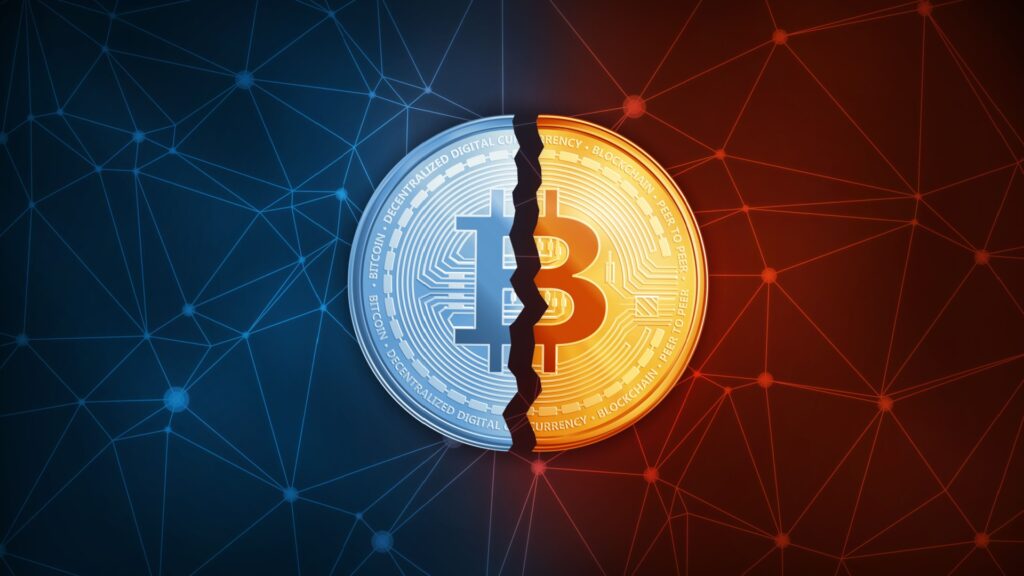A fork in blockchain terms represents a change in the blockchain protocol that can lead to the network splitting into two separate branches. This phenomenon can be caused by various reasons and is crucial for understanding the functioning of blockchain technology. A fork in the blockchain is one of the key concepts in the world of cryptocurrencies and distributed ledger technology. The fork refers to the division of the blockchain into two separate chains, resulting in the creation of two distinct cryptocurrency networks.
Why Did Forks Come About?
Firstly, blockchain network codes are constantly being updated. Many public blockchains are developed by people from all over the world and have open-source code, and forks allow them to gain additional functionality.
Secondly, forks eliminate security risks. Thanks to forks, updates are released for such cases to prevent problems.
Thirdly, forks help annul transactions if they are found to be violated and malicious.
Hard Fork and Soft Fork — Two Main Types of Forks in Blockchain

A hard fork is a change in the blockchain protocol that makes old blocks or transactions invalid. This means that all nodes in the network must update their software components to continue operating in the new version of the network. A hard fork can be planned or triggered by disagreements within the community. It represents a protocol change that is not compatible with the earlier version of the blockchain. This leads to the division of the blockchain into two separate chains, each continuing to develop independently. An example of a hard fork is the split of the Bitcoin blockchain into Bitcoin and Bitcoin Cash.
A soft fork is a change that does not invalidate old blocks or transactions and does not require software updates for existing network nodes. A soft fork is typically a safer and less disruptive way to update the blockchain, representing a protocol update compatible with earlier versions of the blockchain. This means all nodes continue to operate on one chain of blocks, and there is no division into separate networks. An example of a soft fork is the implementation of protocol improvements in Ethereum.
Planned and Accidental Forks
Planned forks are often pre-announced by the developer community and network participants, and are usually associated with the desire to introduce new features or improvements. Accidental forks can be caused by technical issues or disagreements within the community.
Fork Example: Ethereum

The Ethereum blockchain is designed to run “smart contracts,” which are pieces of code that automatically execute a set of predefined actions. Applications for smart contracts include games, DeFi, logistics tools, and much more.
If we talk about the Ethereum blockchain as a platform on which applications run, it can be compared to a computer operating system. Continuing the analogy, various forks (Ethereum Classic and Ethereum 2.0) are like newer versions of the operating system, incorporating features that were not present in previous versions.
The old version can continue to be a stable and well-established platform, while the new one can offer developers different ways to interact with it. The old and new versions may merge in the future or continue to develop separately from each other.
Thus, a soft fork is like updating your software (for example, when an iPhone prompts you to update iOS to the latest version), while a hard fork is like a completely new operating system.
Why is a Fork Necessary?

A fork in blockchain may be needed for various reasons. For example, it can be used to improve the blockchain's performance, enhance security, or add new features. A fork can also result from disagreements within the community regarding the future development of the blockchain.
The key feature of forks is their impact on decentralization and network security. A hard fork can lead to the division of the community and a decrease in trust in the network, as users may end up on different blockchains. On the other hand, a soft fork can contribute to improving the protocol and increasing blockchain security.
A fork is often applied in the world of cryptocurrencies, where there are many different currencies with open-source code. However, the fork can also be used in other areas where blockchain technology is applied, such as the financial sector or healthcare.
What is the Future of Forks in Blockchain?
It is expected that there will be more soft forks in the future because they require less consensus for implementation. They can be used to add new features to a cryptocurrency or to improve the efficiency of the blockchain.
In recent years, there has also been a trend towards the development of multi-chain architectures, which can reduce the need for forks. These solutions aim to make it easier for different blockchain networks to interact with each other and exchange data without the need for forks.
However, at the moment, a fork in blockchain represents an important phenomenon that has a profound impact on the development and functioning of the technology. Understanding the differences between a hard fork and a soft fork, as well as their impact on the network, is a critical aspect of crypto literacy for blockchain community participants and developers.